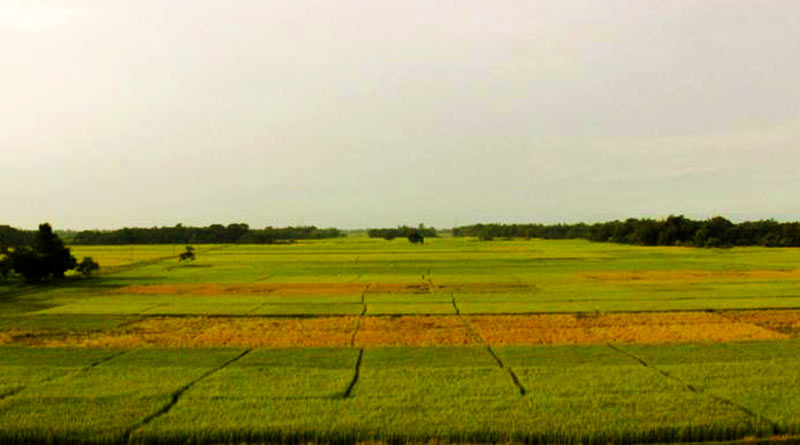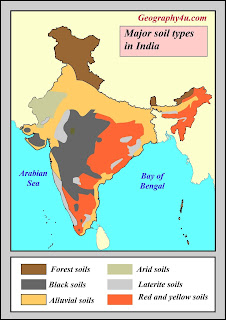The northern plains
India: Northern Plains India: Northern Plains
The vast plains of India are called the most fertile and densely populated terrain of the world. This plain is completely different from peninsular India to peninsular India. This is the latest plot built after the creation of the Himalayas, which was the major portion (geographically a division) of the Indus-Ganga-Brahmaputra, which was separated after the India-Pakistan partition. Much of the Indus River plain in the west and most of the Ganges-Brahmaputra delta in the east is separated from present-day India. This is the reason why the rest of the plain is referred to as the vast plain of India, which consists of the Sutlej and Vyas plains. This ground has also been referred to as the Vishal Maidan by many Indian scholars.
The area of this vast plain is 7 lakh square kilometers. Its length in the east to west direction is about 2,400 kilometers. It is lower in width from west to east. Its width is 500 kilometers in the west and decreases gradually to 145 kilometers in Purvab. In general, the slope of this plain is very flat. Most of it is located at an altitude of about 150 meters above sea level. The political expansion of this ground is in the states of Delhi, North Rajasthan, Haryana, Punjab, Northern Vihar, Uttar Pradesh, Assam, Bengal. Its western boundary merges into the reserved desert.
This vast plain has been formed by the sediments brought by the rivers. This deposit is very thick. No definite opinion has yet been revealed about its thickness. Some scholars have stated on the basis of the experiment that its average thickness ranges from about 1,300 to 1,400 meters. Regardless of its thickness, the information regarding the plain is literally true that the vast plain is made up of trembling deposits, but there is no consensus among scholars about the depth of the deposits. The deepest tremor has been found between Delhi and the palace hills. It is less deep between Rage and Meghalaya Patar, which are found at lower depths from each other. It is clear from these facts that the surface below the ground is neither flat nor monolithic, but it is uneven and high-low. There is evidence of the presence of Archean legs in the trough of this plain. The northern introduction of the Aravalli hills (from Delhi to Haridwar) and the Meghalaya plateau to the west show the presence of these Archaean fragments. The parts between them are also covered with trembling deposits.
Registration of vast grounds
Classifying this field is a very difficult task. Based on the characteristics and gradient of the soil, it can be classified as follows-
Bhabar
Turi
Chamar
Commander
Salting
Geology
Deltai Soil Area
Bhabhar Pradesh: On the northern boundary of the vast plain there are plains made of a mixture of fine debris and rough charts. He is called Bhabhar Pradesh.
Bhabhar Pradesh forms the northern boundary of the Ganges plain. It is a rocky slope of the Himalayas that extends from one end to the other from 10 kilometers to 15 kilometers in width. In this terrain, the water crisis of small rivers flows from the bottom of pebbles and stones, while the water of large rivers flows only on the ground.
Terai region: This region is made up of fine pieces, stones, sand and clay. It is a marshy area in the south of Bhabhar Pradesh. Where water flows from below ground level in Bhabhar region, in the Terai region it again flows slowly on the ground. Due to the lack of slope in the Terai region, water flows continuously, due to which the land of this region is always moist.
Khadar region: The land in which the flood water of rivers reaches each year is called Khadar. It is also known as the floodplain of rivers or the cachar region. In Bihar, Uttar Pradesh and Rajasthan, Khadar land is predominant. The construction period of this region starts from the sub-Pleistocene and this process is going on even today. Due to the availability of sand and pebbles, it is the best ground water.
Madhya Pradesh: This is the highlands where the water of the rivers does not reach. Lime-rich, clay soils are found in this area. The height of this area is not uniform and at some places it is also found at a height of 25-30 meters. Chattar land potential: found in Punjab and Uttar Pradesh.
Reh: In areas where the irrigation works of Chhattisgarh are abundant, a salty white layer is found lying on the land, the soil with this layer is known as Reh or Kallar. The expansion of salt is highest in dry parts. The arid parts of Uttar Pradesh and Haryana are typical examples of this.
Bhud: The heaps of sand found on Chhatar land are called Bhud. Its deposition potential: Ganges and Ramange rivers are more in the flow area.
Deltai Pradesh: The Ganges and Brahmaputra rivers form vast deltas. Their delta is spread in India and Bangladesh. It is noteworthy that Deltai is only an extension of Khadar state. But its southern boundary has been severely truncated by the rivers between the Sone and Chambal rivers, hence the possibility: it is also called a bad place.
Surface plain of northern plain
The northern plains of India can be divided on the basis of surface features as follows:
Indus Plain: This plain extends west of the Indus River. This main is made of trapur. The northern part of this plain is the Cheeka desert, while the southern part consists of sand and loam soil. The eastern part is of deltai type, which merges into the marshy soil of the Kutch run. In this part remains of former river flows (in the form of long and narrow motions) are found on the surface of newly alluvial deposits, called dhoro. The fringes are alkaline lakes found close to dry streams, such as the eastern reservoir.
Punjab Plain: The most distinctive feature of this plain is Panj-Doab. The long-standing depository forces made these doabs a homogeneous geomorphic site. These doabs have been recognized since the time of the first migration of the Aas. Punjab has plain Khadar fields which are extremely useful for agriculture despite flooding. Dhaiyyas are avalanayuktas vapras with a height of 3 meters or more, found on the sides of the Khadar plains. These alluvial features indicate remarkable regularity from Pakistani Punjab to Indian Punjab. A network of narrow currents in the northern part associated with Shivalik gives rise to intense erosion processes, resulting in the formation of large residuals. These water streams are called Chhos (chaos). The sand deposited by the Chhos continues to settle and dislodge after each flood. The edges of obstacles are very unstable, causing their strings to deviate continuously. Small streams are found in abundance in Hoshiarpur district of Punjab.
Gangetic Plains: These plains can be divided into three distinct cultural-geographical divisions - Ganga-Yamuna Doab, Avadh Plain and Mithila Plain. The middle highlands associated with the flow routes of the Yamuna and Chambal are fragmented into ravines and drainages. Because of this, a complex chakravyuha of pits, residuals or excavated land has been created in this area, which is called rugged. Bhabar and Terai plains and earth deposits are the other major oblivions of this part. The open old chhatar has slopes situated in the middle of the high ground.
Transition zone located in Bihar: This area is dominated by cones and endosomes. The slope of the Ganges in this region is greatly reduced due to which the region remains prone to severe floods.
Bengal Delta: Ancient and new punk and marshland are found in it. This delta is actually an erosional plain which is known as a deposit area.
The cross delta is a plain, which is the result of corrosion reactions. In the north it forms the Doab of the Ganges-Brahmaputra and in the west forms the middle and equatorial plain of the Hooghly and Peninsular divisions. Towards the east it merges into the Surma valley and the Meghna plain.
Assam Plain: This ground is 640 km from Dhubri to Sadia. Length and 100 km. Is wide in width. This plain is built in the form of erratic altars of the Brahmaputra and its tributaries.
Western Plains: These plains are mainly spread in the desert of reg and the Rann of Kutch. It is atmospheric and more harmful than water. The region was under the sea from the pre-Carboniferous era to the Pleistocene era. The major geographical features of the region include the Pahishis (mobile sandalwood trees), Runes (Playa lakes) and Rohi (fertile plains west of Aravalli). Lakes such as Sambhar, Didwana, Kuchaman, Degana, Pachpad and Lunkarsar Tal are found in this area.
Importance of Northern Plains Importance of Northern Plains of India
The region is of high economic importance. Fertile soils, perennial water sources and favorable climate have made this region an ideal area for agriculture.
Apart from agricultural productivity, the site of the region is quite suitable in terms of dissemination of communication media. Likewise, there is an intensive concentration of population in these areas. Although this area is 1/3 of the total area of the country


Comments
Post a Comment